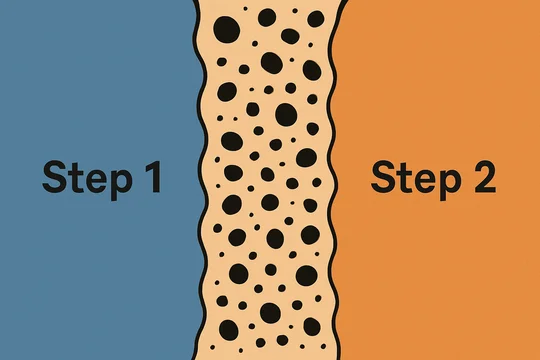
Judge Burke issued an R&R today recommending denial of a § 101 motion to dismiss. The patent had a single, lengthy claim related to a new type of system-on-a-chip (SOC) that eliminates redundant components by using multiple "media processing units."
The claim sets out the structure of the apparatus, including that the media processing units have certain features and functions:
1. An apparatus for processing data, comprising:
a plurality of media processing units, each . . . :
a multiplier . . . ;
an arithmetic unit . . . ;
an arithmetic logic unit . . . ; and
a bit manipulation unit . . . .
each of the plurality of media processors for performing
at least one . . . operation comprising:
receiving . . . an instruction . . . ;
receiving . . . input/output data . . . ;
processing the data . . . ; and
providing at least one . . . result . . . .
Judge Burke found that the claims were not directed to the abstract idea of "data processing" under Step 1 of the Alice test.
First, he rejected defendant's attempt to focus on the data-processing elements of the claims:
By emphasizing these claimed steps of storing, or receiving, or processing or providing data, [defendant] Netgear tries to portray the claim as being focused solely on “functional language” and “result-focused elements[.]” . . .
The problem with that approach, however, is that it leaves out the meat of the claim—i.e., the portions of claim 1 requiring that the apparatus must include multiple media processing units (as well as each of the four types of execution units making up such units), and requiring that those units must work together and with the addressable memory in a certain way.
The Court disagreed that the other elements of the claim were conventional, noting that even if those elements were composed of conventional components, the defendant couldn't show that those components were arranged in an a conventional way:
Netgear says . . . the claimed computer components and the way they interact with each other are merely “generic” and “employed in the conventional manner.” . . . But there Netgear runs into a problem: there is nothing in the record that clearly supports this assertion. [T]he cited portion of column 13 does not say this at all. There, the specification is not acknowledging that the referenced media processing units are “conventional”—indeed, the word “conventional” is never used. . . . While it is not disputed that the media processing units employ “conventional execution units” (i.e., the multiplier, the arithmetic unit, the arithmetic logic unit and the bit manipulation unit), . . . there is nothing in the record to demonstrate that the claimed arrangement of these units—e.g., to form media processing units that can be run concurrently—was well-known and conventional in the prior art.
This was bolstered by a finding that the defendant apparently inadvertently admitted that the claim is directed to a specific arrangement of components, before later arguing that it is not:
At other points in its briefing, Netgear argues that claim 1 “contains no specific configuration of computer components whatsoever[.]” . . . But this assertion seems to be contradicted by another statement Netgear made in its opening brief, where it acknowledged that the “focus” of the claim was on “the concept of processing data by configuring circuits using a method different from prior art methods[.]” . . . Netgear’s prior acknowledgement suggests that claim 1 does require at least some sort of configuration of circuit architecture different than what was used in the prior art. . . .
In sum, based on the record before the Court, Netgear’s step one arguments are not well taken. The patent indicates that claim 1 is not simply directed to the generic concept of “data processing” writ large. Instead, it is directed to an apparatus that requires particular components that are configured in a particular way—an apparatus that the patent says helps improve the way computers work. As a result, Netgear’s Motion must fail.
The Court did not reach Step Two of Alice, and recommended denial of the § 101 motion.
If you enjoyed this post, consider subscribing to receive free e-mail updates about new posts.




